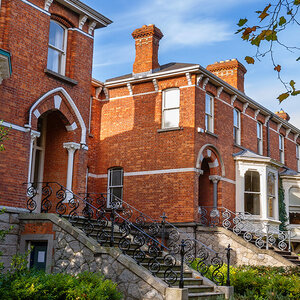Press Releases

Things to Consider Before Purchasing a Property in a London Conservation Area
» Press Releases Edition | By Author | March 14, 2024 12:16 PM ET
As London continues to thrive as a global hub for luxury real estate, the allure of owning a property in one of its historic conservation areas has become increasingly appealing to high net worth individuals. These areas, rich in architectural heritage and cultural significance, offer a unique blend of elegance and prestige.
However, before diving into the world of property investment in London's conservation areas, there are several important factors that potential buyers should carefully consider.
In this article, Todi & Boys - London sash window company, dive into 6 key factors you should be aware of.
1. Preservation Regulations
London's conservation areas are subject to strict preservation regulations aimed at protecting their historic character and architectural integrity. Before purchasing a property, buyers should familiarise themselves with these regulations to understand what alterations or renovations are permissible. Consultation with local planning authorities or conservation officers is advisable to ensure compliance with preservation guidelines.
2. Architectural Significance
Properties located within conservation areas often boast exquisite architectural features and unique historical significance. Buyers should thoroughly research the architectural style and historical background of the property they are interested in to appreciate its heritage value fully. Preservation of these architectural elements adds to the property's charm and prestige, enhancing its appeal to discerning buyers.
3. Maintenance Costs
Owning a property in a London conservation area comes with additional maintenance responsibilities and costs. Preservation of historical features, such as period facades, sash windows, and ornate detailing, may require specialised maintenance techniques and materials, which can be more expensive than standard upkeep. Buyers should factor in these maintenance costs when assessing the overall investment potential of the property.
4. Community Engagement
Conservation areas are often closely-knit communities with a strong sense of pride in their heritage. Buyers should consider engaging with the local community and heritage groups to gain insights into the area's history and ongoing preservation efforts. Building positive relationships with neighbours and participating in community initiatives can contribute to a fulfilling and enriching living experience in a conservation area.
5. Future Development
While conservation regulations aim to preserve the character of these areas, it's essential to consider the potential impact of future development on the property's value and livability. Buyers should research any proposed developments or infrastructure projects in the vicinity that may affect the area's ambiance or accessibility. Understanding the long-term development plans can help buyers make informed decisions about their investment in a conservation area property.
6. Professional Guidance
Given the intricacies involved in purchasing a property in a London conservation area, seeking professional guidance from real estate agents specialising in heritage properties or conservation experts is highly recommended. These professionals can provide valuable insights into the market dynamics, regulatory requirements, and preservation challenges specific to conservation areas, ensuring a smooth and informed purchasing process.
In conclusion, purchasing a property in a London conservation area offers a unique opportunity to own a piece of the city's rich architectural heritage. However, prospective buyers must carefully consider the preservation regulations, architectural significance, maintenance costs, community engagement, future development, and seek professional guidance to make a well-informed investment decision. With thorough research and careful planning, acquiring a property in a conservation area can be a rewarding experience, combining luxury living with a deep appreciation for London's historical legacy.





